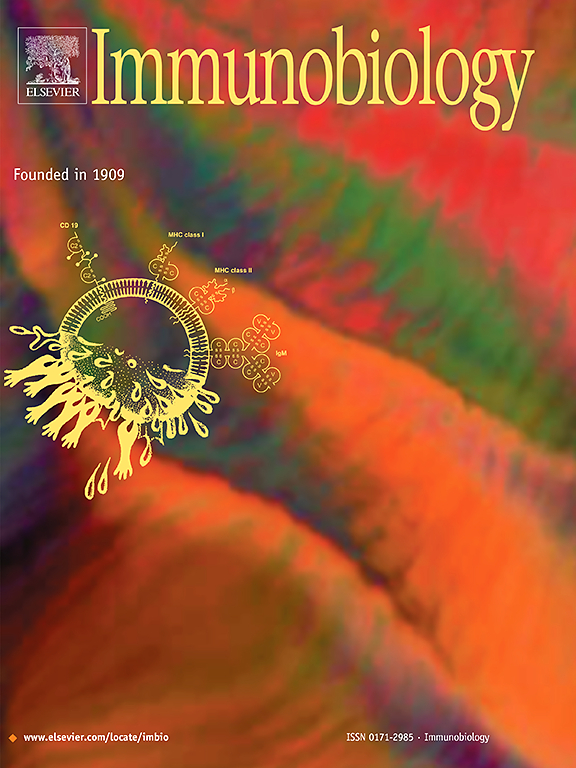解脲原体GrpE蛋白通过TLR2在巨噬细胞中引发糖酵解介导的炎症反应
IF 2.3
4区 医学
Q3 IMMUNOLOGY
引用次数: 0
摘要
尿解支原体感染的发病机制与宿主的炎症反应有关;然而,这一现象背后的具体分子机制尚未完全阐明。GrpE 是一种伴侣蛋白,可加速 ADP 释放和 ATP 与 DnaK 的结合,从而增强 HSP70 系统在压力下的伴侣功能。然而,人们对其替代活动(如促炎症反应)仍然知之甚少。在本研究中,我们报告了 U. urealyticum GrpE 作为细胞因子诱导毒力因子对巨噬细胞的作用。利用基因敲除小鼠和特异性抑制剂,我们发现 GrpE 诱导的促炎细胞因子表达是由 TLR2/STAT3 通路介导的。我们还发现,糖酵解对这种促炎反应至关重要。从机理上讲,GRPE 处理可刺激 STAT3 依赖性柠檬酸和乙酰-CoA 的积累,促进组蛋白乙酰化和强效促炎反应。我们的研究结果表明,糖酵解在 GrpE 通过 TLR2/STAT3 通路诱导的炎症反应中发挥作用,并促进了糖酵解介导的炎症反应,从而为尿囊炎感染的发展提供了新的认识。本文章由计算机程序翻译,如有差异,请以英文原文为准。
Ureaplasma urealyticum GrpE protein elicits glycolysis-mediated inflammatory responses through TLR2 in macrophages
The pathogenesis of Ureaplasma urealyticum infection is linked to the host inflammatory response; however, the specific molecular mechanisms underlying this phenomenon have not been fully elucidated. GrpE is a chaperonin that accelerates ADP release and ATP binding to DnaK, thereby enhancing the chaperone function of the HSP70 system under stress. However, alternative activities such as pro-inflammatory responses remain poorly understood. In this study, we report that the U. urealyticum GrpE exerts as a cytokine-inducing virulence factor toward macrophages. Using gene-knockout mice and specific inhibitors, we found that GrpE-induced pro-inflammatory cytokine expression was mediated by the TLR2/STAT3 pathway. We also found that glycolysis was essential for this pro-inflammatory response. Mechanistically, GrpE treatment stimulated STAT3-dependent accumulation of citric acid and acetyl-CoA, promoting histone acetylation and potent pro-inflammatory responses. Our results indicate that glycolysis plays a role in the inflammatory response induced by GrpE through the TLR2/STAT3 pathway and contributes to the glycolysis-mediated inflammatory response, offering a fresh understanding of the development of U. urealyticum infection.
求助全文
通过发布文献求助,成功后即可免费获取论文全文。
去求助
来源期刊

Immunobiology
医学-免疫学
CiteScore
5.00
自引率
3.60%
发文量
108
审稿时长
55 days
期刊介绍:
Immunobiology is a peer-reviewed journal that publishes highly innovative research approaches for a wide range of immunological subjects, including
• Innate Immunity,
• Adaptive Immunity,
• Complement Biology,
• Macrophage and Dendritic Cell Biology,
• Parasite Immunology,
• Tumour Immunology,
• Clinical Immunology,
• Immunogenetics,
• Immunotherapy and
• Immunopathology of infectious, allergic and autoimmune disease.
 求助内容:
求助内容: 应助结果提醒方式:
应助结果提醒方式:


